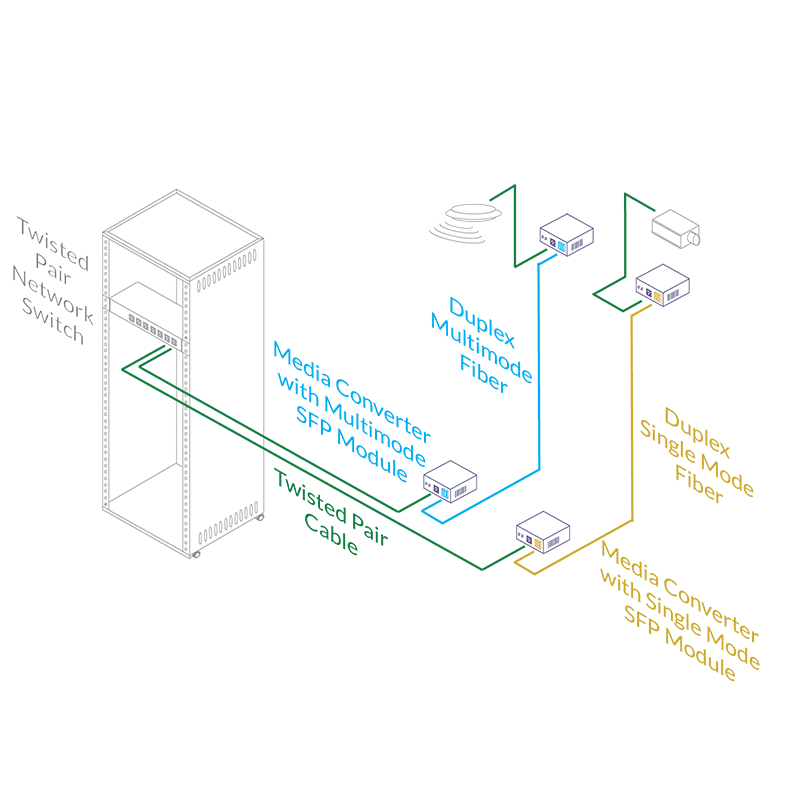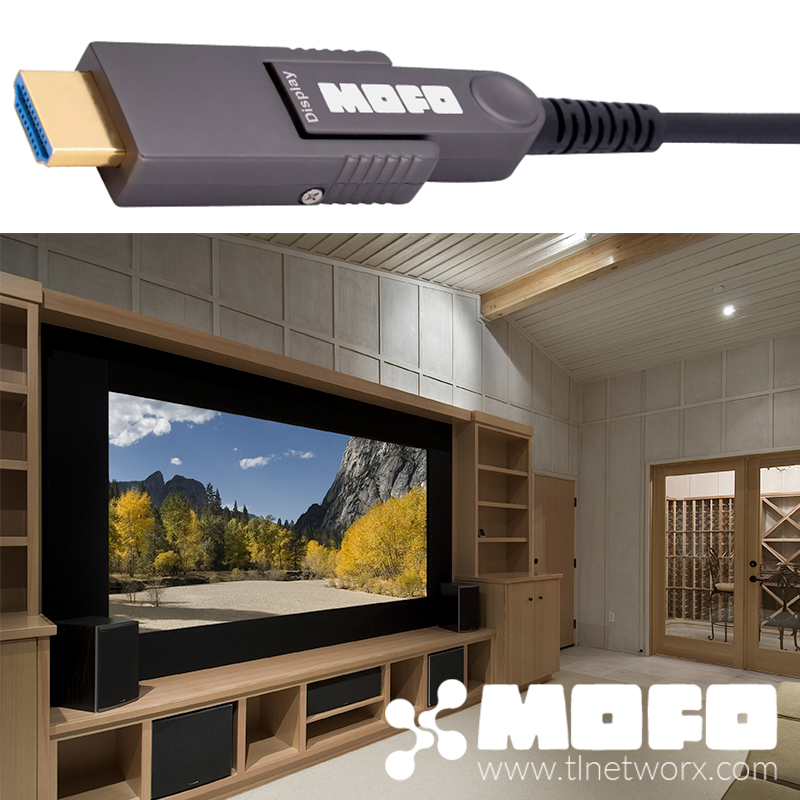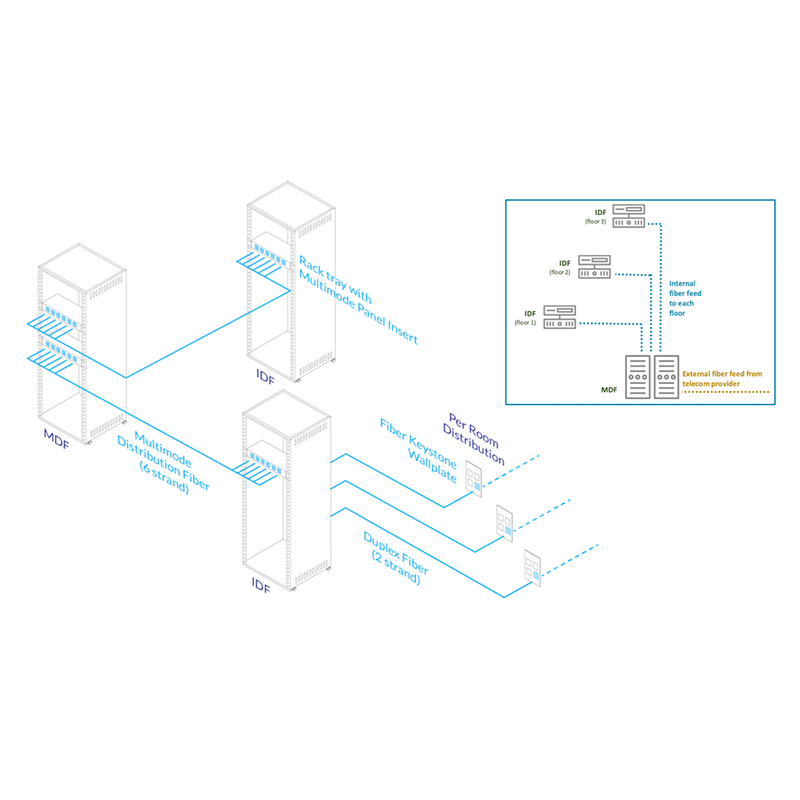Application Guide: Connecting Different Fiber Formats Together

Modern single mode and multimode fiber cabling features different optical core sizes (9μm and 50μm, respectively) and won’t natively splice or couple together. It is possible to connect the two different cable types; however, a media converter must be used to adapt the core sizes and optical wavelengths.

Application Design Notes:
Media converters typically require SFP transceiver modules to complete the fiber optic connection. These modules are specific to the type of fiber being connected (either single mode or multimode). Choose an SFP module based on the fiber optic cabling that will be connected to the network switches and ensure it is connected to the proper type of fiber.
SFP transceiver modules almost always require two fiber optic cable strands. Always integrate duplex (two strand) fiber optic cabling or higher strand counts.
Most modern SFP transceiver modules feature duplex LC connections. Terminate your fiber optic cabling with two LC-style connectors or purchase a pre-terminated fiber optic cable with two LC-style connectors.
When connecting terminated duplex fiber optic cable between media converters and/or network equipment, ensure the connections are reversed between the SFP transceiver ports (connection A to B and B to A). SFP transceiver modules rely on the transmission of separate send and receive signals.
Select an SFP module that matches the bandwidth of your media converter. 1G modules are technically classified as SFP transceivers, 10G modules are classified as SFP+ transceivers, and QSFP transceivers support even higher bandwidths.
Commonly Integrated Products:
 
|
Media Converters Media converters with dual SFP ports adapt two different types of fiber optic cabling, such as single mode and multimode. When used in this application, TechLogix media converters require two different SFP modules specific to the cabling being connected. View |
 |
SFP Transceiver Modules SFP modules provide the fiber optic connection for network switchers and media converters with fiber optic (SFP) ports. The modules are swappable and are specific to either duplex multimode fiber or duplex single mode fiber. View |
 |
Fiber Patch Cords Premade fiber optic cables arrive pre-terminated with connectors and are available in stock and custom configurations. View |
 |
Bulk Fiber Cable Bulk fiber cable requires termination in the field and is available in stock and custom configurations. Both riser and plenum formats are commonly used to connect networking equipment and media converters. View |
 |
Fiber Optic Connectors Fiber optic connectors terminate on bulk fiber cable. View |




Comments